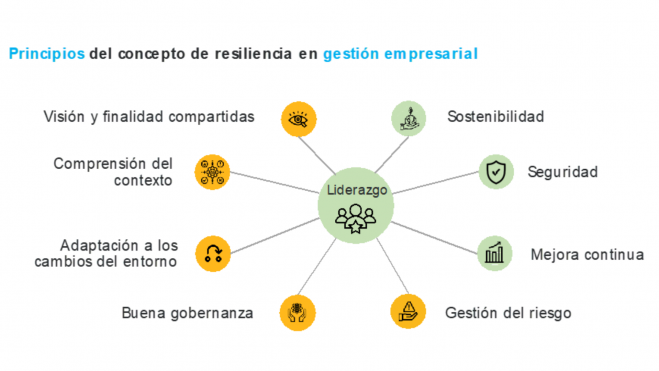[The following article is based on the only doctoral thesis in Spain that analyses the cosmetics sector: ‘Factors of organisational resilience in the Spanish cosmetics industry: SMEs and crisis in times of Covid-19’].
In the cosmetics industry, the ability to adapt and thrive in the face of unforeseen events is essential. Organisational resilience has become a crucial concept to ensure continuity and success in a volatile and constantly changing environment. This briefing presents practical tools based on machine learning and econometrics, designed for leaders and teams looking to strengthen their business in the face of any challenge.
1. Understanding and building organisational resilience
Organisational resilience is not just a concept, but a dynamic process that encompasses an organisation's ability to anticipate, adapt and respond effectively to change. The key to developing this resilience lies in several fundamental principles:
- Shared vision and purpose: Ensuring that all members of the organisation understand and are aligned with the mission and strategic objectives is crucial. This fosters a sense of ownership and common direction that strengthens collective crisis response.
- Understanding the updated context: Keeping a constant watch on the internal and external environment allows for timely identification of risks and opportunities. This includes monitoring market trends, regulatory changes and technological developments.
- Adaptability and flexibility: The ability to adjust quickly to new circumstances is essential. This is achieved through an organisational culture that promotes innovation, creativity and a willingness to change.
2. Machine Learning tools for resilience
Machine learning offers powerful tools to anticipate and manage risk. Here are some practical applications:
- Demand forecasting: using machine learning algorithms, companies can analyse historical sales patterns and predict future fluctuations in product demand. This enables better inventory management and production planning.
- Customer sentiment analysis: Text analytics tools can evaluate customer comments and reviews in real time, providing valuable insights into market perception and detecting potential problems before they escalate.
- Predictive maintenance: In cosmetics manufacturing, machine learning can predict equipment failures before they occur, minimising downtime and improving operational efficiency.
3. Econometrics: evaluation and continuous improvement
Econometrics is central to assessing and improving organisational resilience. Some key tools are presented here:
- Impact analysis: assessing the impact of different resilience strategies on organisational performance allows you to identify the most effective ones and adjust tactics as needed.
- Simulation modelling: Developing models that simulate different crisis scenarios helps to plan responses and prepare the organisation for various contingencies. This includes simulations of natural disasters, supply chain disruptions and economic crises.
- Cost-benefit assessment: Analysing the costs associated with implementing resilience strategies versus the benefits gained ensures efficient management of resources.
4. Practical tips for leaders and teams
To successfully implement these tools and principles, leaders and teams should consider the following practical tips:
- Foster diversity and inclusion: A diverse workforce in terms of knowledge and experience improves the organisation's ability to anticipate and adapt to risks. Effective management of this diversity is essential to optimise its positive effects.
- Promote a culture of continuous improvement: Instilling a commitment to continuous improvement at all levels of the organisation fosters greater resilience. This includes implementing innovative practices and adopting advanced technologies.
- Train in leadership skills: Leaders must be prepared to manage uncertainty and communicate effectively in times of crisis. Leadership training is crucial to strengthening team and organisational resilience.

5. Conclusions
For owners or managers in the cosmetics sector (SMEs) applying these tools is essential to build a resilient, solid, competitive and successful organisation in the long term.
The key messages for success are:
- 5.1. Continuous Improvement and Adaptation: Maintain a focus on constant improvement and the ability to adapt quickly to change.
- 5.2. Advanced Technologies: Use machine learning and econometrics to make data-driven decisions, predict trends, and optimise resources.
-
5.3. Dynamic Leadership: Leaders must:
- Create engaged teams
- Understand the internal and external context
- Anticipate and act dynamically
- Manage with transparency and accountability
- Assess risks and foster continuous improvement.
- 5.4 Comprehensive Security: Protects people, assets, products, processes and logistics to strengthen organisational resilience.
- 5.5 Sustainability: Implements sustainable measures to improve competitiveness and strengthen the organisation in the face of competition, is profitable in the medium and long term.
